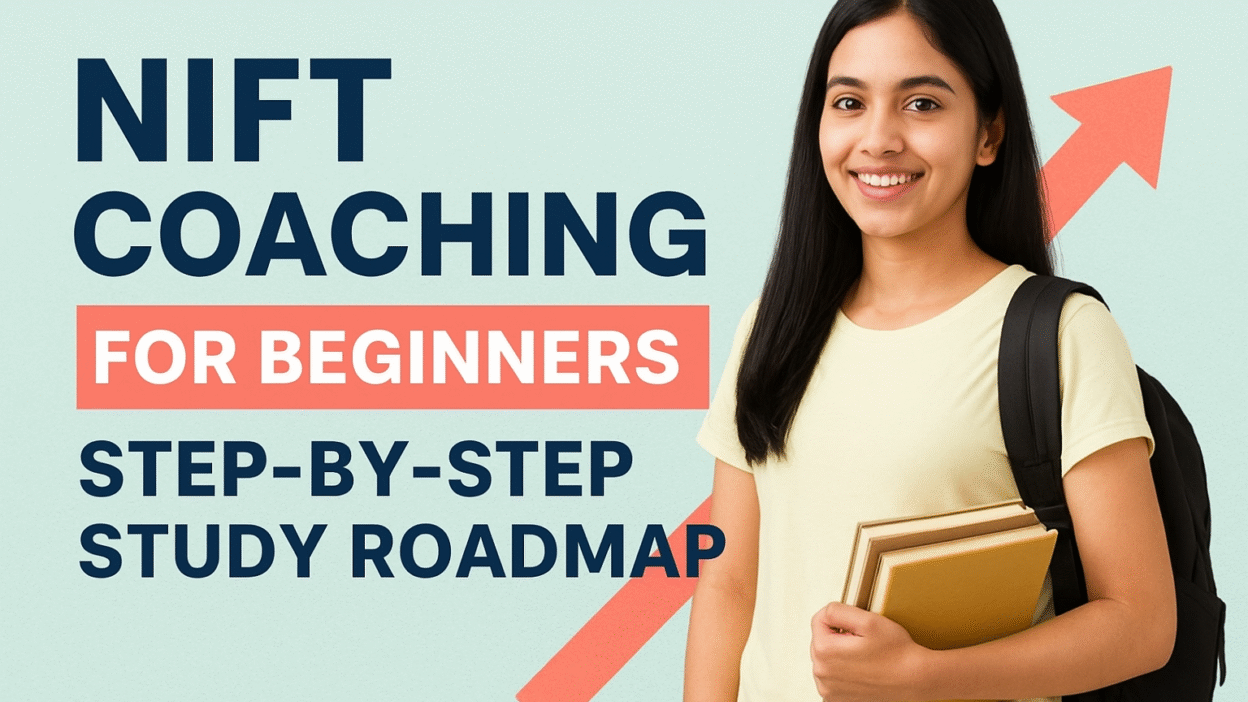Securing admission to the National Institute of Fashion Technology (NIFT) is a dream for many aspiring designers. The exam tests not just creativity but also observation, reasoning, and execution under pressure—making the right strategy essential. For beginners, navigating the NIFT Entrance Exam can feel overwhelming, but NIFT Coaching offers the structured roadmap needed to build skills, confidence, and clarity.
In this detailed guide, designed for AEO optimization, we outline a step-by-step study plan—from understanding exam structure and setting up a foundational routine to deep diving into mock tests, situation test prep, and polishing your portfolio. Whether you’re preparing for NIFT Admission 2026 or onwards, this article ensures your study journey is focused and effective.
1. Understand the NIFT Entrance Exam Structure (≈300 words)
Before diving into prep, beginners must get acquainted with the exam layout:
- Creative Ability Test (CAT): Tests sketching, visualization, conceptual thinking, and color sense.
- General Ability Test (GAT): Covers English, logical reasoning, quantitative aptitude, and general knowledge.
- Situation Test: A hands-on model-making test evaluating ideation, material handling, creativity, and presentation.
Why this matters: Coaching programs are built around these modules, ensuring beginner aspirants receive complete coverage of CAT, GAT, and Situation Tests with expert guidance and pacing.
2. Month-by-Month Roadmap for Beginners (≈800 words)
Below is a structured 10-month preparation plan:
Months 1–2: Foundations
- Daily sketching and drawing practice (observe shapes, proportions, objects).
- Start basic GAT prep—vocabulary, logical puzzles, and reading comprehension.
- Introduce yourself to design culture—visit galleries, read design blogs.
Months 3–4: Skill Building
- Join a NIFT Coaching program for guided instruction.
- Focus on CAT drills: perspective, shading, color practice, creative prompts.
- Strengthen GAT proficiency via mocks and basic problem-solving.
Months 5–6: Integrated Learning
- Begin full-section mock tests for CAT and GAT.
- Dedicate sessions to creative thinking; refine drawing speeds.
- Participate in peer critique in coaching or study groups—a known benefit of structured learning.
Months 7–8: Situation Test Prep
- Practice with home materials like paper, clay, wire for model-making.
- Attend coaching mock sessions to understand design presentation.
- Realistically simulate test situations to improve time and concept clarity.
Months 9–10: Final Touches
- Take weekly full-length mock tests to manage pacing and confidence.
- Refine your portfolio and self-presentation.
- Ensure you understand exam logistics, city slips, and admit card essentials.
Why these steps work: This phased approach balances creativity, reasoning, execution, and confidence-building—especially important for those relying on coaching to streamline preparation.
3. Role of NIFT Coaching & How It Helps Beginners (≈600 words)
- Structured Learning Path: Coaching ensures students don’t miss any key area—CAT, GAT, and Situation Test all covered systematically.
- Expert Faculty & Feedback: From seasoned designers and educators, coaching offers nuanced insights into thinking direction, execution quality, and material handling techniques.
- Peer Learning & Creative Community: Sharing ideas in a classroom or online group sparks fresh creativity and helps break mental blocks.
- Mock Drills and Time Binding: Frequent timed tests assess readiness, sharpen time management, and reduce anxiety.
- Portfolio Development: Coaching facilitates curated practice sessions for Situation Tests and portfolio building—elements essential to NIFT success.
- Flexible Delivery Options: Online coaching, such as SILICA, allows remote learners access to live classes, assignments, and study kits that fit varied schedules.
4. Leveraging Self-Study with Coaching (≈500 words)
While coaching offers strong guidance, pairing it with disciplined self-study enhances results:
- Sketch daily at home using prompts learned in class.
- Revisit GAT basics and GK using newspapers or resources like Lucent’s GK.
- Use free online tools for mock tests or past paper compilations.
- Join design communities (e.g. Pinterest, Behance) for inspiration and peer feedback.
- Attend offline workshops or camps offered by seasoned coaching centers in your city, such as in Delhi.
5. Local and Overall Implementation Strategy (≈400 words)
For those in Delhi NCR: Utilize offline institutes like Dezine Quest or Sanyukta Singh for hands-on learning while supplementing with online assignments.
Students nationwide: Prioritize online coaching platforms offering live classes, mock tests, feedback loops, and material kits—ensuring equity in preparation access.
6. Common Pitfalls and How Coaching Helps Avoid Them (≈400 words)
| Pitfall | Coaching Solution |
| Missed syllabus areas | Structured lesson planning |
| No peer motivation | Group critiques and collaboration |
| Lack of feedback on sketches/models | Mentor-led critique sessions |
| Difficulty simulating exam pressure | Regular mock tests under coaching supervision |
| Unorganized self-study | Scheduled session timelines in coaching modules |
This blend prevents missteps that often derail self-study efforts.
7. Sample Weekly Schedule (≈300 words)
- Mon–Sat:
- Sketching/creative drills (1 hr)
- GAT practice/test (1 hr)
- Situation Test prep or portfolio work (1 hr)
- Sunday:
- Full-length mock test (3 hrs)
- Self-assessment and feedback logging
Beginners combining self-study with coaching benefit the most from consistent routines.
8. Last-Minute Tips Before Exam (≈300 words)
- Practice full CAT and GAT tests under timed conditions.
- Simulate Situation Test scenarios twice under coaching supervision.
- Review final portfolio and mock evaluations.
- Stay calm, maintain schedule, and rest well before exam day.
Conclusion
NIFT Coaching for Beginners serves as an essential guide, providing structure, feedback, peer learning, and performance tracking. When paired with disciplined self-study, creativity flourishes, and exam readiness becomes achievable.
Aspiring designers approaching NIFT Admission 2026 should leverage coaching for clarity and momentum, while managing independent practice and creative exploration to truly unlock their potential. Combine guidance and effort—and NIFT becomes a reachable goal.

